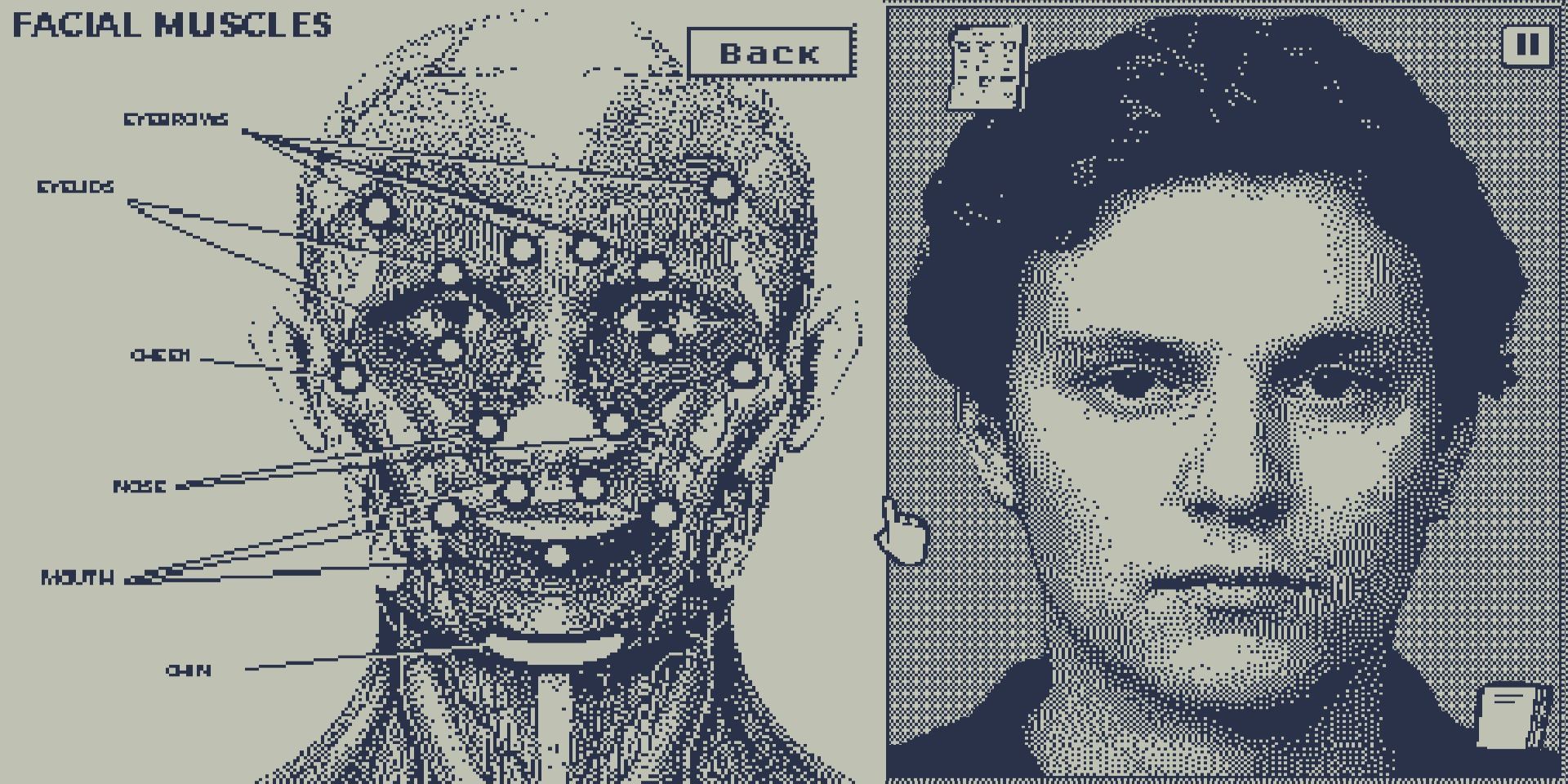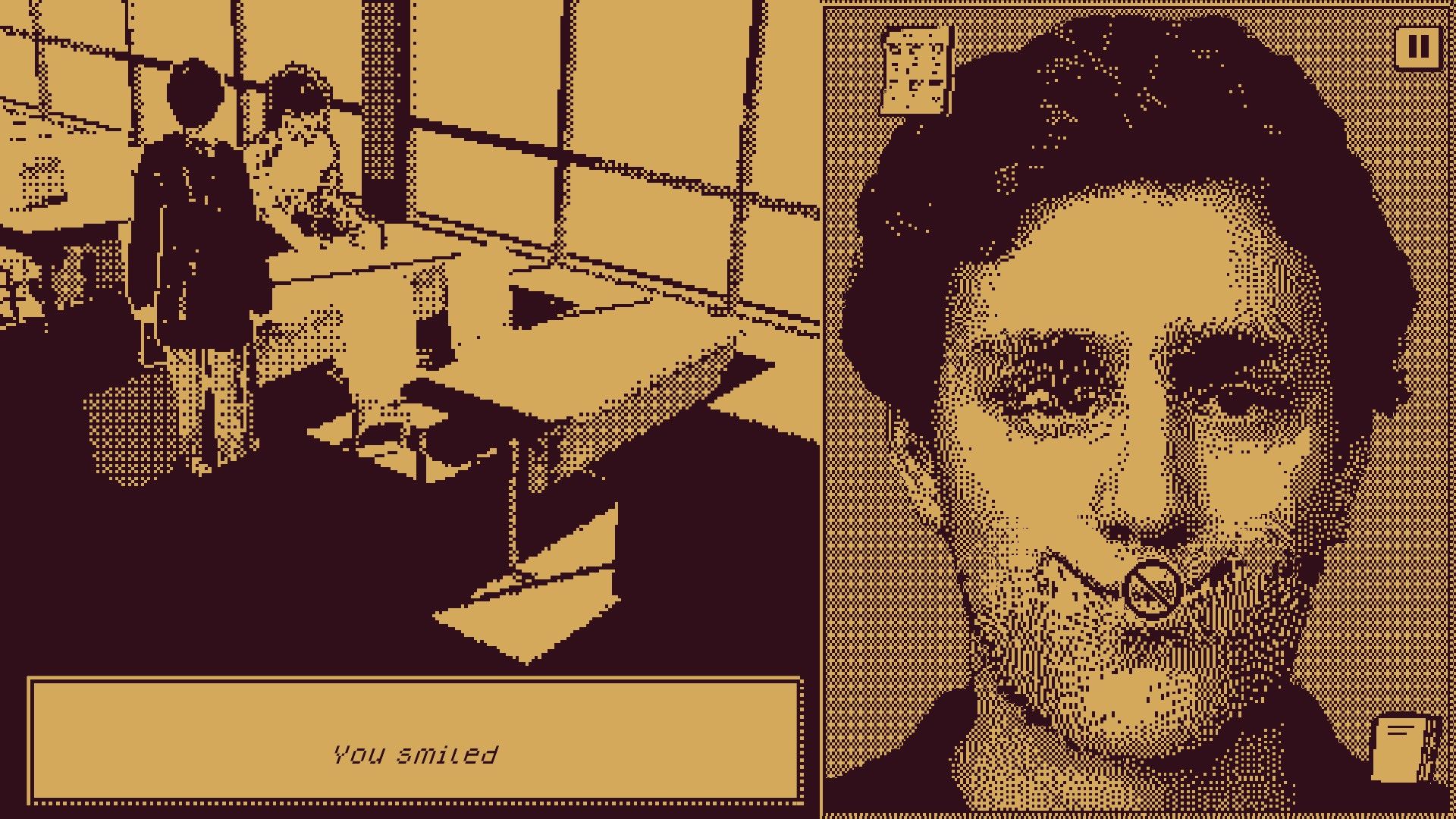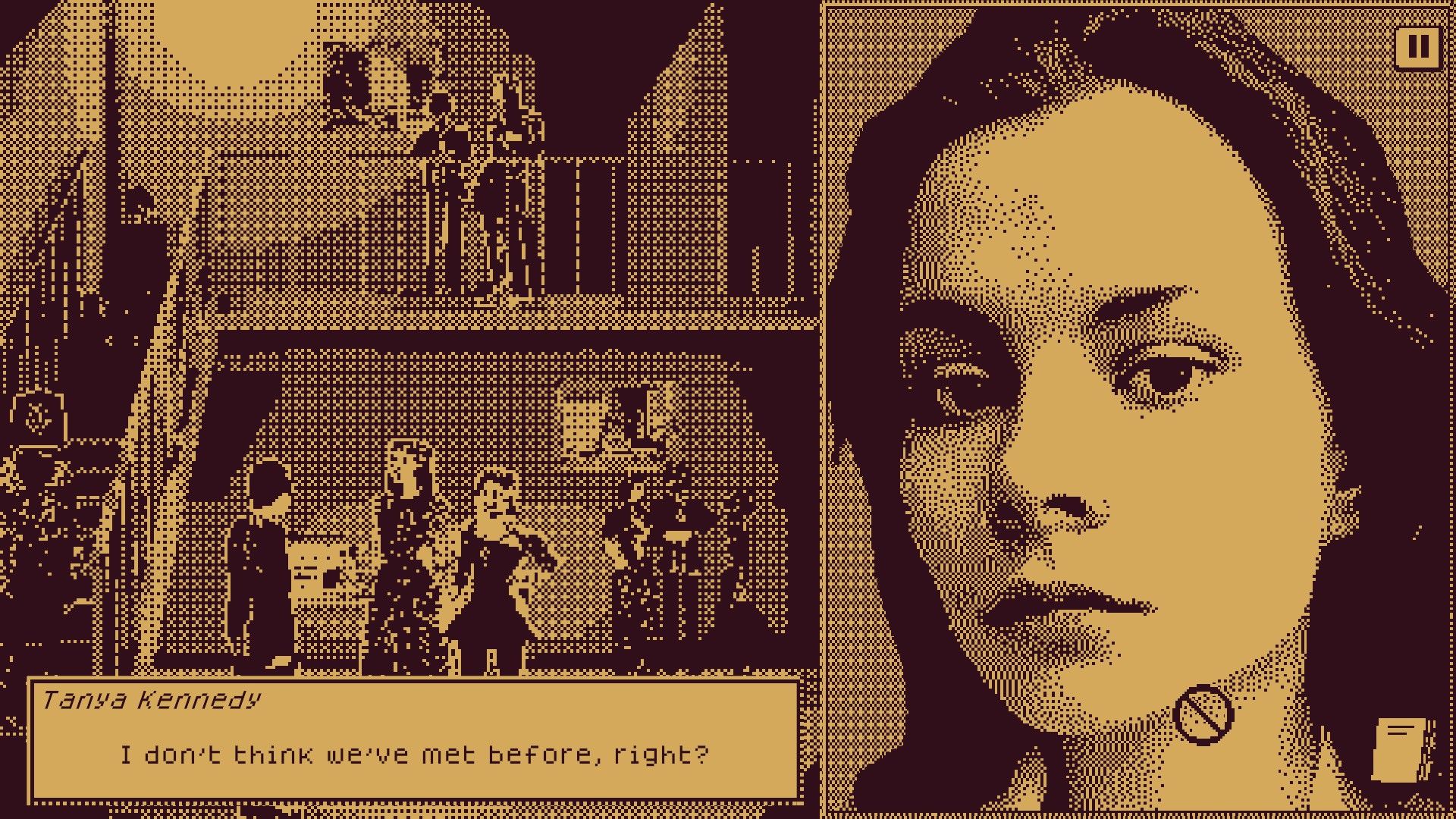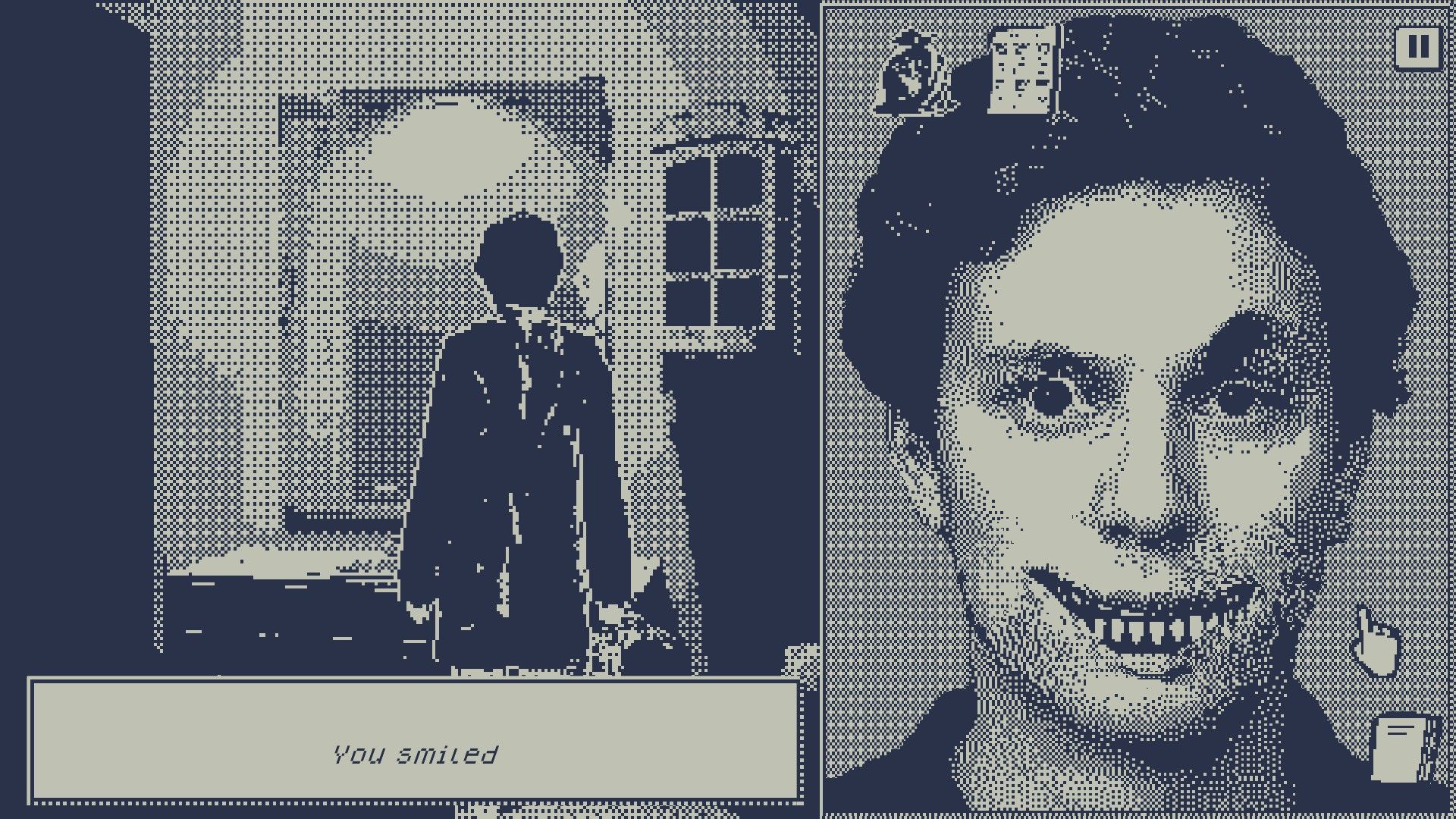When I first imagined finding a dead dog at the steps of my apartment, the facial muscles behind my cheekbones couldn’t help but tense up, pulling up the corners of my mouth into an awful smile. It was a struggle to keep them down, to force my face into a more sombre, acceptable look—but then the moment had passed. I took too much time for this little experiment and, luckily, had this interaction happen in my bathroom, because among polite company, things would be pretty awkward, really. I sighed and decided to give this another go.
“If I see a dead dog on the street, I’ll make a face like this.”
I tugged at my eyebrows and lips till I looked appropriately ‘sad’, and then moved on to my next facial exercise—a routine that I have to rehearse every morning before heading out to meet anyone.
That’s the gist of Who’s Lila, a point-and-click game about directing the flow of conversations not by choosing dialogue options, but by presenting the right facial expressions to people: happy, sad, anger, disgust and more. To do so means pulling and nudging at the various muscles on your face—such as your eyebrows, your nose, your lips and even your chin—to contort your face into a hopefully natural expression. A friendly facade, for instance, is mostly straightforward enough, as a gentle smile would usually do the trick. But more complex expressions usually require a bit more finesse; a look of disgust, for instance, will need you to scrunch up your eyebrows, frown a little, and lift your upper lip to reveal just a little bit of teeth. It’s a gimmick that transforms an instinct we barely think much about into an elaborate puzzle. This has made me hyper aware of how my face is akin to a mechanical contraption, powered by the symbiotic movement of several tiny muscles, sinews, and skin.
But for William, the man whose face you’re actively contorting in this game, his inability to emote feels like a painful reality. This doesn’t come naturally to him—he even has to carry a note that reminds him of what the different expressions mean—and it’s clear that he doesn’t get along well with most people he meets. Exacerbating this is the fact that one of his friends, Tanya Kennedy, has already gone missing for a week, and he was supposedly the last person to see her. Thus every conversation becomes a potential landmine, as you’ll struggle to give the most appropriate response to folks who are already suspicious and wary of you; I even had to mentally map out how I want William’s face to look like in subsequent conversations. A smile presented at the wrong moment, such as in the midst of a heated argument, or towards a classmate who’s terrified by your presence, can cause dialogues to rapidly turn sour. Making all these more nerve-wracking is also William’s involuntary facial movements, as he also has the tendency for his face to twitch and grimace during moments of heightened anxiety (you can turn this off in the game’s easy mode, if things ever get too dicey).
This is already a frightful enough concept, but as if conversing with people who largely eye you with suspicion isn’t horrifying enough, packed into Who’s Lila’s scratchy, ditherpunk aesthetic as well is a sinister horror story, set in a warped, surreal universe. In stark contrast to William’s highly defined face on the right side of the screen, the rest of the environments in the game are intentionally vague and hazy, adding a sense of ambiguity to the already ghastly atmosphere of Who’s Lila. Take the layout of William’s school, for instance, which is also intentionally confusing, and even actively antagonistic; the doors don’t always lead to the same places, which sometimes require you to pay closer attention to the grainy surroundings, or even listen carefully to cues in the background. Then there’s the plot, too, which revels in its capacity to constantly disorientate you, filled with twists and turns, as well as introducing macabre and supernatural presences that wax lyrical about lofty concepts of perceptions and consciousness. They blather. A lot.
Wedged among the conversations and tasks you’re assigned to are also several puzzles, such as locked diaries and computers, with clues hidden not just within the game itself, but outside the confines of its virtual spaces too. Intriguing enough, Who’s Lila features elements of alternate reality games that would require you to, say, search up specific questions and discover clues on Google. Just a friendly note: you’ll definitely want to make multiple saves across several slots. There are faces that you’ll want to go back to, even if it’s only to dissect the meaning behind their empty smiles.
It’s a bold and interesting concept for a horror game, to be sure—there aren’t a lot of video games that have such features in them. But I’m not too certain if this approach works in its favour, as this seems to dilute what makes Who’s Lila so dreadfully appealing in the first place. Towards the game’s final hours, it eventually abandons its facial expression gimmick altogether, descending towards a more traditional horror experience as you sleuth about in the murky darkness, while attempting to unravel the game’s central mystery: the identity of the eponymous Lila. It feels like an echo of what first drew me into the game. What does our reliance on facial expressions say about social interactions, especially when it can be difficult for some individuals to read them? How do our expressions differ across groups of people, which can potentially lead to misunderstandings? What if a typical face of fear—like an involuntary gasp, alongside a wide-eyed look—doesn’t translate well across different cultures, and can be interpreted as a look of aggression instead? These are some questions I wish Who’s Lila would lean harder into, such as delving into the anxieties and horrors of social interactions, instead of expanding on a story revolving around occult, Lynchian scares.
That’s not to say that Who’s Lila doesn’t do a good job in slipping its tendrils under your skin. It’s still unspeakably spooky; the eeriness of its 1-bit horror does persist even hours later due to its unsettling, cryptic scenes, and its central mystery is compelling enough that you’ll want to revisit the horrors in Who’s Lila over and over again.




